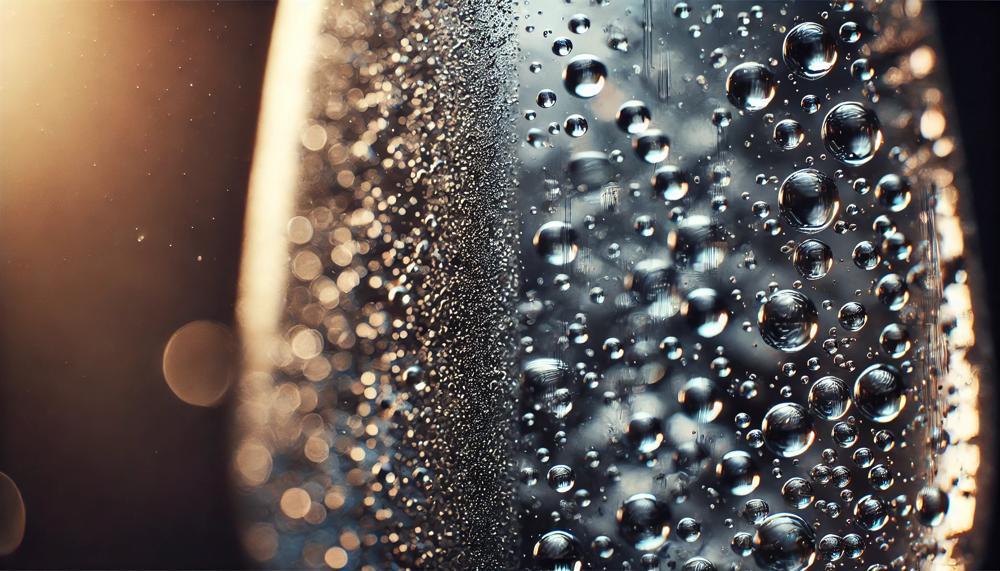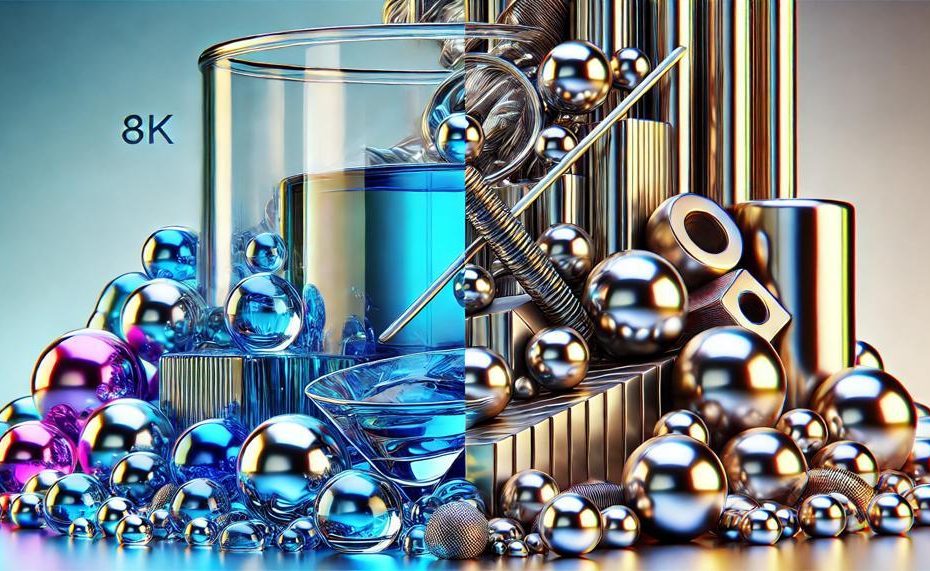No. Determining whether glass is more sustainable than metal depends on various factors like production, recycling, and environmental impact. Both materials have unique strengths and weaknesses regarding sustainability, making the comparison complex.
Glass is made from abundant natural materials like sand and limestone and has the advantage of being 100% recyclable without loss of quality. It can be reused multiple times, and its inert nature ensures it doesn’t leach harmful chemicals into the environment upon disposal. However, producing glass requires high energy, and glass is more prone to breaking, potentially leading to higher waste.
Metal, particularly aluminum, also has a high recycling rate and durability, which can extend the lifespan of products and reduce waste over time. Yet, metal production involves mining activities that are more resource-intensive and energy-consuming compared to glass.
Ultimately, the sustainability of glass versus metal hinges on specific use cases and environmental contexts. Let’s dive into the critical points to better understand this comparison:
- Energy Use in Production: Glass production requires high temperatures, while metal extraction and refining are resource-intensive.
- Recyclability: Both glass and metal boast high recycling rates, but the energy needed for metal recycling is usually greater.
- Reuse Potential: Glass containers can be reused easily, while metal often includes non-recyclable components.
- Durability: Metal’s strength leads to a longer lifespan, potentially reducing environmental impact.
- Disposal Impact: Glass is inert and safe for disposal, whereas metal can pose environmental hazards if not properly managed.
Understanding these nuances helps in making informed decisions on material usage and their environmental implications.
Contents
Energy Consumption in Glass and Aluminium Production
In terms of energy consumption, glass production requires more energy inputs than aluminium production.

However, its energy efficiency improves when it is recycled. On the other hand, while aluminium production uses less energy, it has a higher impact on the environment due to its mining and extraction processes.
Additionally, recycled aluminium saves significantly more energy than recycled glass during production.
Carbon Footprint from Glass and Aluminium
Glass generally has a lower carbon footprint compared to aluminium. Aluminium production is highly energy-intensive, primarily due to the smelting process, which generates approximately 1.1 billion tonnes of CO2 annually. In contrast, glass production emits less CO2 and consumes less energy.
| Material | Carbon Footprint | Sustainability |
| Aluminium | High (1.1bn tonnes CO2 per year) | Less sustainable due to high energy consumption and CO2 emissions |
| Glass | Lower | More sustainable, emits less CO2 and uses less energy |
Recycling impacts both materials differently. While recycled aluminium reduces the need for raw material extraction and saves significant energy, its initial environmental cost remains high. On the other hand, recycling glass improves its energy efficiency and sustainability, even though it doesn’t save as much energy as recycled aluminium.
In summary, glass is the more sustainable choice due to its lower carbon footprint and energy consumption during production.
Recyclability of Glass and Aluminium
Glass vs. Aluminium Recycling:
| Aspect | Glass | Aluminium |
|———————————|—————————————–|————————————–|
| Recyclability | Fully recyclable, but often downcycled | Fully recyclable, retains quality |
| Energy Savings from Recycling | About 25-30% energy savings compared to new production | Up to 95% energy savings compared to new production |
| Recycling Rate | High in Europe (over 70%) but lower in North America (around 40%) | Consistently high globally (around 75%) |
| Environmental Impact | Lower CO2 emissions in production, higher in transportation | Higher CO2 in production, significantly lower with recycling |
Sustainability Comparison:
- Energy Efficiency: Aluminium stands out for its energy efficiency in recycling. Producing aluminium from recycled material saves up to 95% of the energy required for primary production. In contrast, recycled glass saves about 25-30% of the energy needed for new glass.
- Recycling Process: Aluminium retains its properties indefinitely and can be recycled repeatedly without quality loss. Glass can also be recycled indefinitely but often gets downcycled into products of lower quality.
- CO2 Emissions: While both materials are energy-intensive to produce, aluminium recycling drastically reduces CO2 emissions compared to new production. Glass production from recycled materials also lowers emissions but not as significantly as aluminium.
- Economic Value: Aluminium’s high value in the recycling market often leads to better recycling systems and incentives compared to glass. This makes aluminium a more economically sustainable option.
Which is More Sustainable?
In terms of disposal and recyclability, aluminium generally holds the edge. Its high recycling rate, significant energy savings, and ability to retain quality through endless recycling cycles make it more sustainable.
Glass, while fully recyclable and beneficial when recycled, often involves higher transportation costs and may not be recycled at as high a rate depending on regional infrastructure.
Lifecycle Analysis of Glass and Aluminum
Lifecycle analysis (LCA) is a robust methodology used to assess the environmental impact of products, materials, or processes from inception to disposal.
It encompasses the entire lifecycle stages, including raw material extraction, manufacturing, distribution, use, and end-of-life disposal or recycling.
How Lifecycle Analysis Determines Sustainability
Glass:
- Raw Material Extraction: Glass production starts with mining silica, soda ash, and limestone. These activities can lead to habitat destruction and high energy consumption.
- Manufacturing: Melting raw materials requires substantial energy, usually derived from fossil fuels, resulting in significant carbon emissions.
- Distribution and Use: Glass is heavy, increasing transportation energy and costs. However, it is inert, making it safe for food and beverage storage.
- Recycling: Glass can be recycled indefinitely without losing quality, but the process is energy-intensive.
Aluminum:
- Raw Material Extraction: Aluminum production begins with bauxite mining, which can cause land degradation and water pollution.
- Manufacturing: Converting bauxite into aluminum is energy-intensive but advancements in technology have made it more energy-efficient.
- Distribution and Use: Aluminum is lightweight, reducing transportation energy. It’s also durable, with applications in packaging, construction, and transportation.
- Recycling: Aluminum has a high recycling rate and can be recycled repeatedly with minimal energy compared to primary production.
Future Prospects of Glass and Aluminum
Advancements in technology will significantly enhance the sustainability of glass and aluminum by improving recycling processes, reducing energy consumption, and developing more efficient manufacturing techniques.
These innovations will address current challenges such as high transport costs for glass and the need for increased recycling rates.
Key Technological Advancements:
| Aspect | Glass | Aluminum |
| Recycling Efficiency | Advanced sorting, cleaner cullet production | Inert anode technology, reduced emissions |
| Energy Consumption | Low-energy melting processes, renewable energy integration | Improved electrolytic reduction, renewable energy use |
| Transportation Impact | Stronger, lighter glass products | Advanced alloys, lighter materials |
Sustainability Implications:
- Cost and Resource Allocation: Governments need to research and invest in these technologies to boost glass collection and recycling systems. Adequate resource allocation will enhance the efficiency and sustainability of both materials.
- Environmental Impact: Reduced energy consumption and improved recycling rates will lower the environmental footprint of glass and aluminum, making them more sustainable choices in various applications.
These advancements ensure that both glass and aluminum remain viable and sustainable materials for the future, balancing environmental impact with functional needs.
Conclusion
Whether glass or metal is more environmentally friendly depends on a number of things. Each material has its own pros and cons when it comes to sustainability.
Glass, which is made from common natural materials like sand and rock, is praised for being able to be recycled over and over again without losing any of its quality. Because it is harmless, it doesn’t release chemicals that are bad for the earth. But making glass takes a lot of energy and high temperatures, and because it is fragile, there is a lot of trash and it costs a lot to ship because it is heavy.
Aluminum, on the other hand, shines because it lasts a long time and can be recycled easily. Recycling aluminum many times uses a lot less energy than making it in the first place, which makes it much better for the earth over time. However, getting metals out of the ground and processing them uses a lot of resources and is bad for the environment.
When it comes to how much energy it uses, metal is better. Making aluminum takes a lot of energy at first, but reusing it can save up to 95% of the energy needed to make new aluminum. Making new glass uses about 25–30% more energy than recycling glass, even though reusing glass is also good for the environment.
A study of carbon footprints shows that glass usually has a smaller carbon footprint than aluminum, since the process of melting metal releases a lot of CORecycling metal, on the other hand, makes it much better for the earth and, when done right, makes it more sustainable than glass.
In the end, the environmental impact of glass versus metal depends on the situation. For uses where strength and light weight are important, aluminum is often a better choice because it is easier to recycle and costs less to ship. For uses where chemical inertness and full recycling are important, on the other hand, glass is better.
In the end, both elements have big effects on and benefits for the world. When deciding between glass and metal, the most environmentally friendly choice should be based on specific use cases, recycle facilities, and the total lifecycle effect.





